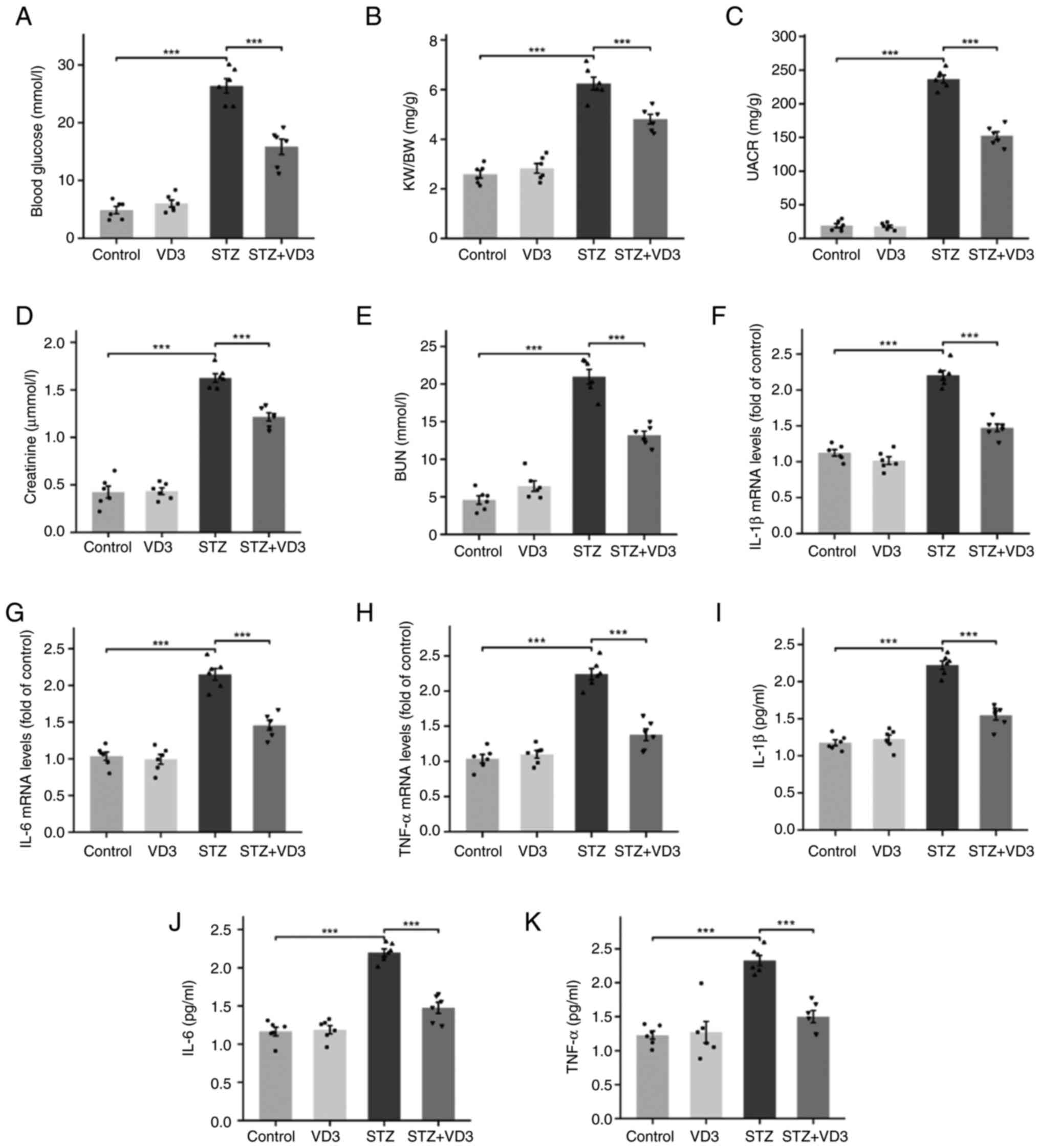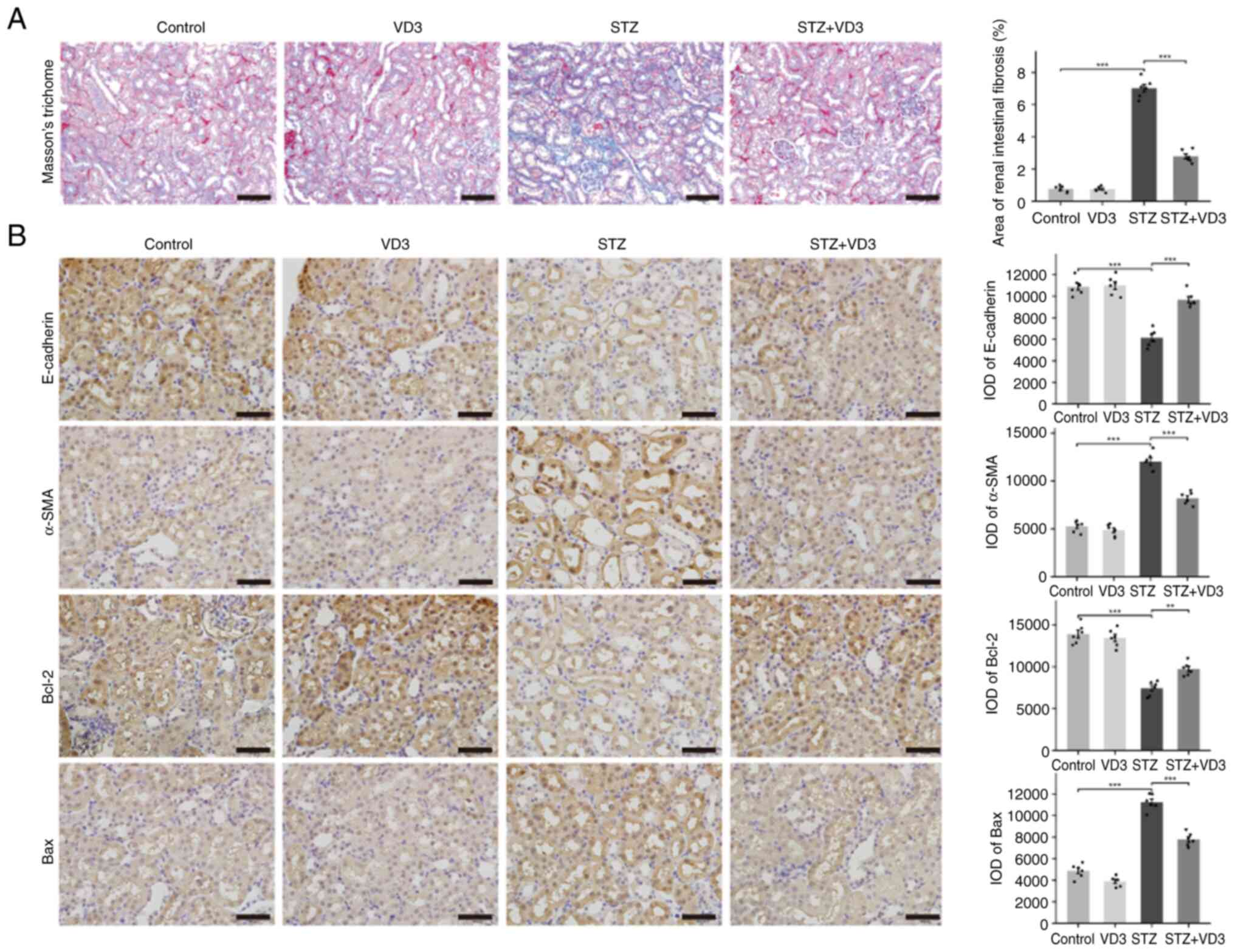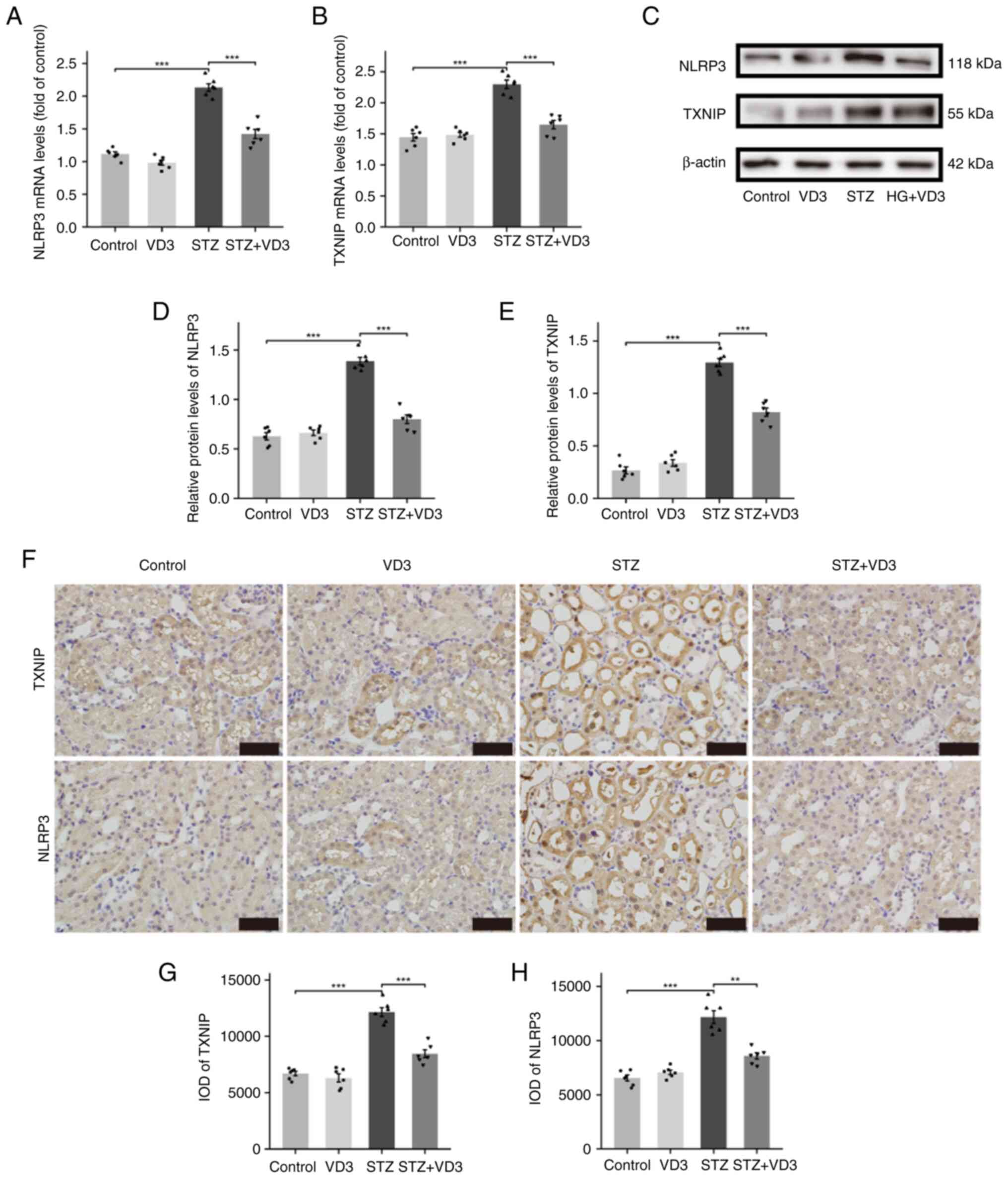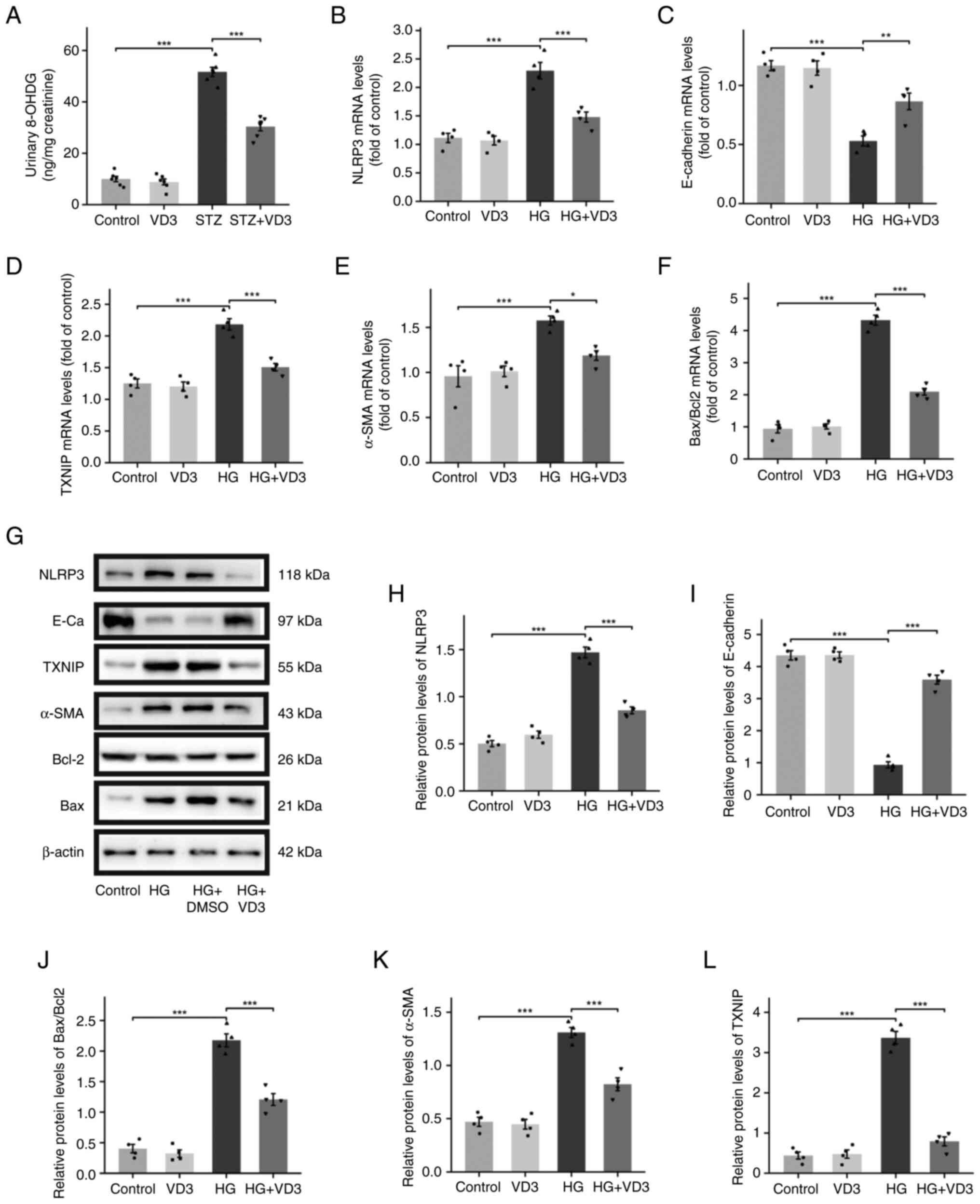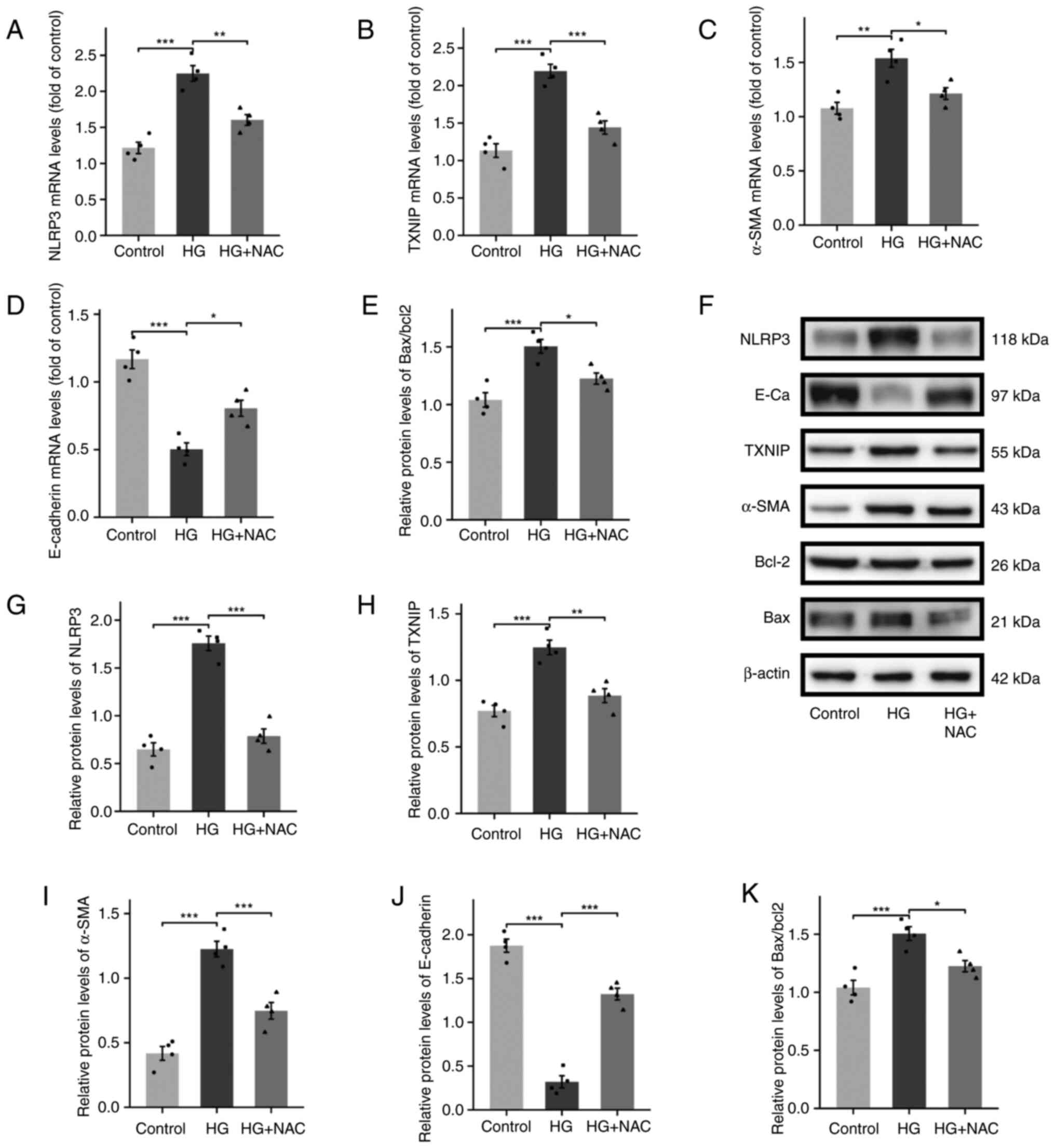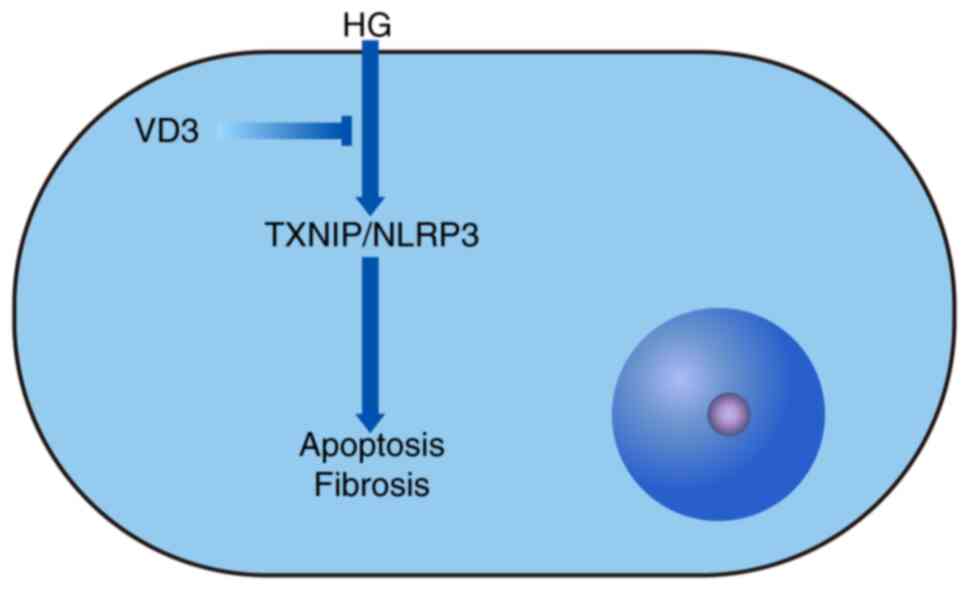|
1
|
Diabetes Control and Complications
Trial/Epidemiology of Diabetes Interventions and Complications
(DCCT/EDIC) Research Group. Nathan DM, Zinman B, Cleary PA,
Backlund JC, Genuth S, Miller R and Orchard TJ: Modern-day clinical
course of type 1 diabetes mellitus after 30 years' duration: The
diabetes control and complications trial/epidemiology of diabetes
interventions and complications and pittsburgh epidemiology of
diabetes complications experience (1983-2005). Arch Intern Med.
169:1307–1316. 2009.PubMed/NCBI View Article : Google Scholar
|
|
2
|
Wild S, Roglic G, Green A, Sicree R and
King H: Global prevalence of diabetes: Estimates for the year 2000
and projections for 2030. Diabetes Care. 27:1047–1053.
2004.PubMed/NCBI View Article : Google Scholar
|
|
3
|
Collins AJ, Foley RN, Chavers B,
Gilbertson D, Herzog C, Ishani A, Johansen K, Kasiske BL, Kutner N,
Liu JN, et al: US renal data system 2013 annual data report. Am J
Kidney Dis. 63 (1 Suppl)(A7)2014.PubMed/NCBI View Article : Google Scholar
|
|
4
|
Paneni F, Beckman JA, Creager MA and
Cosentino F: Diabetes and vascular disease: pathophysiology,
clinical consequences, and medical therapy: Part I. Eur Heart J.
34:2436–2443. 2013.PubMed/NCBI View Article : Google Scholar
|
|
5
|
Gall MA, Rossing P, Skøtt P, Damsbo P,
Vaag A, Bech K, Dejgaard A, Lauritzen M, Lauritzen E, Hougaard P,
et al: Prevalence of micro- and macroalbuminuria, arterial
hypertension, retinopathy and large vessel disease in European type
2 (non-insulin-dependent) diabetic patients. Diabetologia.
34:655–661. 1991.PubMed/NCBI View Article : Google Scholar
|
|
6
|
Remuzzi G, Benigni A and Remuzzi A:
Mechanisms of progression and regression of renal lesions of
chronic nephropathies and diabetes. J Clin Invest. 116:288–296.
2006.PubMed/NCBI View
Article : Google Scholar
|
|
7
|
Baynes JW and Thorpe SR: Role of oxidative
stress in diabetic complications: A new perspective on an old
paradigm. Diabetes. 48:1–9. 1999.PubMed/NCBI View Article : Google Scholar
|
|
8
|
Ceriello A, Morocutti A, Mercuri F,
Quagliaro L, Moro M, Damante G and Viberti GC: Defective
intracellular antioxidant enzyme production in type 1 diabetic
patients with nephropathy. Diabetes. 49:2170–2177. 2000.PubMed/NCBI View Article : Google Scholar
|
|
9
|
Lu L, Lu Q, Chen W, Li JW, Li CX and Zheng
Z: Vitamin D3 protects against diabetic retinopathy by
inhibiting high-glucose-induced activation of the ROS/TXNIP/NLRP3
inflammasome pathway. J Diabetes Res. 2018(8193523)2018.PubMed/NCBI View Article : Google Scholar
|
|
10
|
Simon AR, Rai U, Fanburg BL and Cochran
BH: Activation of the JAK-STAT pathway by reactive oxygen species.
Am J Physiol. 275:C1640–C1652. 1998.PubMed/NCBI View Article : Google Scholar
|
|
11
|
Kang BPS, Frencher S, Reddy V, Kessler A,
Malhotra A and Meggs LG: High glucose promotes mesangial cell
apoptosis by oxidant-dependent mechanism. Am J Physiol Renal
Physiol. 284:F455–F466. 2003.PubMed/NCBI View Article : Google Scholar
|
|
12
|
Zhu XJ, Wu SH and Guo HC: Active vitamin D
and vitamin D receptor help prevent high glucose induced oxidative
stress of renal tubular cells via AKT/UCP2 signaling pathway.
Biomed Res Int. 2019(9013904)2019.PubMed/NCBI View Article : Google Scholar
|
|
13
|
Zehnder D, Bland R, Williams MC, McNinch
RW, Howie AJ, Stewart PM and Hewison M: Extrarenal expression of
25-hydroxyvitamin d(3)-1 alpha-hydroxylase. J Clin Endocrinol
Metab. 86:888–894. 2001.PubMed/NCBI View Article : Google Scholar
|
|
14
|
Plum LA and DeLuca HF: Vitamin D, disease
and therapeutic opportunities. Nat Rev Drug Discov. 9:941–955.
2010.PubMed/NCBI View
Article : Google Scholar
|
|
15
|
Prietl B, Treiber G, Pieber TR and Amrein
K: Vitamin D and immune function. Nutrients. 5:2502–2521.
2013.PubMed/NCBI View Article : Google Scholar
|
|
16
|
Chagas CE, Borges MC, Martini LA and
Rogero MM: Focus on vitamin D, inflammation and type 2 diabetes.
Nutrients. 4:52–67. 2012.PubMed/NCBI View Article : Google Scholar
|
|
17
|
Wei H, Bu R, Yang QH, Jia J, Li T, Wang QP
and Chen YJ: Exendin-4 protects against hyperglycemia-induced
cardiomyocyte pyroptosis via the AMPK-TXNIP pathway. J Diabetes
Res. 2019(8905917)2019.PubMed/NCBI View Article : Google Scholar
|
|
18
|
Yates AG, Weglinski CM, Ying Y, Dunstan
IK, Strekalova T and Anthony DC: Nafamostat reduces systemic
inflammation in TLR7-mediated virus-like illness. J
Neuroinflammation. 19(8)2022.PubMed/NCBI View Article : Google Scholar
|
|
19
|
Hewison M: Vitamin D and the immune
system: New perspectives on an old theme. Rheum Dis Clin North Am.
38:125–139. 2012.PubMed/NCBI View Article : Google Scholar
|
|
20
|
Guillot X, Semerano L,
Saidenberg-Kermanac'h N, Falgarone G and Boissier MC: Vitamin D and
inflammation. Joint Bone Spine. 77:552–557. 2010.PubMed/NCBI View Article : Google Scholar
|
|
21
|
Aksoy H, Akçay F, Kurtul N, Baykal O and
Avci B: Serum 1,25 dihydroxy vitamin D (1,25(OH)2D3), 25 hydroxy
vitamin D (25(OH)D) and parathormone levels in diabetic
retinopathy. Clin Biochem. 33:47–51. 2000.PubMed/NCBI View Article : Google Scholar
|
|
22
|
Kaur H, Donaghue KC, Chan AK,
Benitez-Aguirre P, Hing S, Lloyd M, Cusumano J, Pryke A and Craig
ME: Vitamin D deficiency is associated with retinopathy in children
and adolescents with type 1 diabetes. Diabetes Care. 34:1400–1402.
2011.PubMed/NCBI View Article : Google Scholar
|
|
23
|
Prabhu RA and Saraf K: Vitamin D in
diabetic nephropathy. J Postgrad Med. 64:5–6. 2018.PubMed/NCBI View Article : Google Scholar
|
|
24
|
Cheng Q, Li YC, Boucher BJ and Leung PS: A
novel role for vitamin D: Modulation of expression and function of
the local renin-angiotensin system in mouse pancreatic islets.
Diabetologia. 54:2077–2081. 2011.PubMed/NCBI View Article : Google Scholar
|
|
25
|
Shah A, Xia L, Masson EA, Gui C, Momen A,
Shikatani EA, Husain M, Quaggin S, John R and Fantus IG:
Thioredoxin-interacting protein deficiency protects against
diabetic nephropathy. J Am Soc Nephrol. 26:2963–2977.
2015.PubMed/NCBI View Article : Google Scholar
|
|
26
|
Shi Y, Ren Y, Zhao L, Du C, Wang Y, Zhang
Y, Li Y, Zhao S and Duan H: Knockdown of thioredoxin interacting
protein attenuates high glucose-induced apoptosis and activation of
ASK1 in mouse mesangial cells. FEBS Lett. 585:1789–1795.
2011.PubMed/NCBI View Article : Google Scholar
|
|
27
|
Ha H, Hwang IA, Park JH and Lee HB: Role
of reactive oxygen species in the pathogenesis of diabetic
nephropathy. Diabetes Res Clin Pract. 82 (Suppl 1):S42–S45.
2008.PubMed/NCBI View Article : Google Scholar
|
|
28
|
Chen N, Song S, Yang Z, Wu M, Mu L, Zhou T
and Shi YH: ChREBP deficiency alleviates apoptosis by inhibiting
TXNIP/oxidative stress in diabetic nephropathy. J Diabetes
Complications. 35(108050)2021.PubMed/NCBI View Article : Google Scholar
|
|
29
|
Susztak K, Raff AC, Schiffer M and
Böttinger EP: Glucose-induced reactive oxygen species cause
apoptosis of podocytes and podocyte depletion at the onset of
diabetic nephropathy. Diabetes. 55:225–233. 2006.PubMed/NCBI
|
|
30
|
Ortega MA, De Leon-Oliva D, García-Montero
C, Fraile-Martinez O, Boaru DL, de Castro AV, Saez MA,
Lopez-Gonzalez L, Bujan J, Alvarez-Mon MA, et al: Reframing the
link between metabolism and NLRP3 inflammasome: Therapeutic
opportunities. Front Immunol. 14(1232629)2023.PubMed/NCBI View Article : Google Scholar
|
|
31
|
Fraile-Martinez O, García-Montero C,
Pekarek L, Saz JV, Álvarez-Mon MÁ, Barrena-Blázquez S,
García-Honduvilla N, Buján J, Asúnsolo Á, Coca S, et al: Decreased
survival in patients with pancreatic cancer may be associated with
an increase in histopathological expression of inflammasome marker
NLRP3. Histol Histopathol. 39:35–40. 2024.PubMed/NCBI View Article : Google Scholar
|
|
32
|
Zheng Z, Chen HB, Ke GJ, Fan Y, Zou HD,
Sun XD, Gu Q, Xu X and Ho PCP: Protective effect of perindopril on
diabetic retinopathy is associated with decreased vascular
endothelial growth factor-to-pigment epithelium-derived factor
ratio: Involvement of a mitochondria-reactive oxygen species
pathway. Diabetes. 58:954–964. 2009.PubMed/NCBI View Article : Google Scholar
|
|
33
|
Zheng Z, Chen H, Wang H, Ke B, Zheng B, Li
Q, Li P, Su L, Gu Q and Xu X: Improvement of retinal vascular
injury in diabetic rats by statins is associated with the
inhibition of mitochondrial reactive oxygen species pathway
mediated by peroxisome proliferator-activated receptor gamma
coactivator 1alpha. Diabetes. 59:2315–2325. 2010.PubMed/NCBI View Article : Google Scholar
|
|
34
|
Schroder K, Zhou RB and Tschopp J: The
NLRP3 inflammasome: A sensor for metabolic danger? Science.
327:296–300. 2010.PubMed/NCBI View Article : Google Scholar
|



